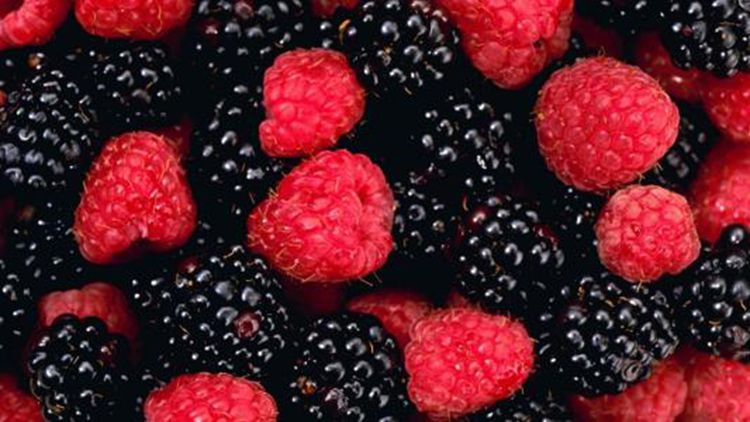
GUANGDONG KELONG BIOTECHNOLOGY CO., LTD.
Add: No.5-17 and No.5-32, South area of Qibao Industry and Trade, Huicheng, Xinhui, Jiangmen, Guangdong, China
Tel:+86-750-6978788
Fax:+86-750-6978868
Wechat: 13828063050
Website: http://revistapescaperu.com
Email: export@kelongbio.com
marketing@kelongbio.com
Usually, when we wash fruits at home, we always find that some fruits are soaked in the water for a while, and the whole pot of water becomes a color similar to the outer skin of the fruit. Some people will be exclaimed if they are deceived. Therefore, rumors about the "staining" of fruits are spread quickly on TV, radio, Weibo, WeChat and other platforms, so that consumers do not know how to choose reliable fruits. So, must the fruit fade be artificially dyed?

Water-soluble plant pigments are easy to fall off with water
Fruit is an indispensable part of the daily diet, and the grape is one of the favorite fruits because of its sweet and sour taste and nutritious taste. However, many people have encountered the situation of grape fading. Is the grape fading normal? What is the color of this hand? Is the grape dyed?
"Grape fading" is not new. In fact, the phenomenon of "fading" does not only occur on fruits, but some agricultural products also have the same "trouble", such as black rice and black sesame. Excluding the reason for the manual addition of the business, the color drop is a characteristic of the fruit or the crop itself, because it contains a large amount of natural pigment. There are many kinds of natural pigments in plants. Before the artificial pigments were developed, most of the color in life comes from the natural pigments of plants.
Plant natural pigments include fat-soluble chloroplast pigments and water-soluble cytochromes. Water-soluble pigments are mainly anthocyanins, also known as anthocyanins, which are commonly found in flowers, and their color changes with the pH (pH).
The "color" in "grape color drop" belongs to anthocyanins in plant natural pigments, and strawberry, black rice, peanut beans and the like also contain such anthocyanins. Anthocyanins are a type of pigment that is widely distributed in various parts of plants. The aroma of buds, red rose petals, and falling red maple leaves have all existed. Anthocyanins, which are usually stored in the vacuoles of plant cells, dissolve into the outside water when the cells are broken, and it is not surprising that the water is stained.
Plant natural pigments are fat-soluble in addition to being water soluble. For example, the lycopene in tomato is red, but why does it wash the tomato under normal conditions without reddening it? In fact, the reason is very simple, because lycopene in tomato is a fat-soluble pigment, which is difficult to dissolve in water. A little attention will reveal that the tomato egg soup that is often used on weekdays is hard to be dyed red, while the soup of tomato scrambled eggs is red, because lycopene is more willing to be intimate contact with oil.
The discoloration of fruits or crops is related to the environment medium (water or grease) and to the pigment enrichment site. For example, purple rice, peanut beans, black sesame seeds, their pigments are concentrated on the epidermis, and these pigments are all water-soluble, and it is normal to wash off the color with water.
Carefully distinguish the appearance of "suspicious" fruit
Therefore, whether the water for cleaning fruits or crops is dyed depends on the specific properties of the plant pigments in the species. From the perspective of nutrition safety, natural pigments such as anthocyanins, lycopene and catechol have certain benefits for human health, and have no side effects and high safety. Studies have shown that these substances have strong reducing properties, can remove oxidizing substances in the human body, can reduce the incidence of diseases such as cancer; at the same time they can provide the necessary vitamins, minerals and cellulose and other nutrients. substance.
For rumors such as the spread of fruit dyeing on the Internet to improve freshness, some experts said that most of the fruits or crops are currently grown well and their appearance is normal. It is not necessary to change their appearance by dyeing. In addition, some merchants and farmers said that the cost of dyeing fruits or crops is too high, and they can't do everything they can to make a loss. Therefore, consumers do not have to worry too much about whether fruit or crops are added with coloring agents.
However, according to the relevant provisions of China's "Food Safety National Standards for the Use of Food Additives" (GB2760), foods are allowed to add some edible natural pigments within a certain dose range, but never exceed the range. Some traders illegally add pigments that are banned by the state in the fruit, shoddy and deceive consumers. For example, the "stained rambutan" incident that occurred in 2016. According to relevant media reports, in order to have a good selling, some unscrupulous merchants will not be fully mature, not red Rambutan do some hands and feet before selling, put them into hydrochloric acid and carmine to soak, after processing dyeing, re- Packaging, sale. According to China's relevant standards, the coloring agent of carmine is absolutely forbidden to be used in fresh fruits. What's more, toxicology experiments show that carmine has certain carcinogenic and mutagenic effects on mice.
From this, it can be concluded that some natural pigments in fruits or crops are soluble in water, and it is normal for water to be dyed during washing. Consumers need to pay attention to discrimination and not panic. In order to prevent being deceived, experts recommend that consumers should go to the regular farmers market or supermarket to buy food. When purchasing fruit, you should choose the appearance of “unpretentious”. If the fruit skin is particularly bright, it may be waxed or dyed. If you feel that you have bought suspicious food, it is difficult for the naked eye to distinguish. It is recommended to go to the authoritative testing department for special testing.